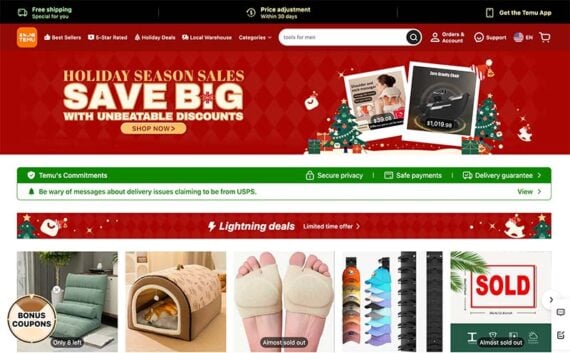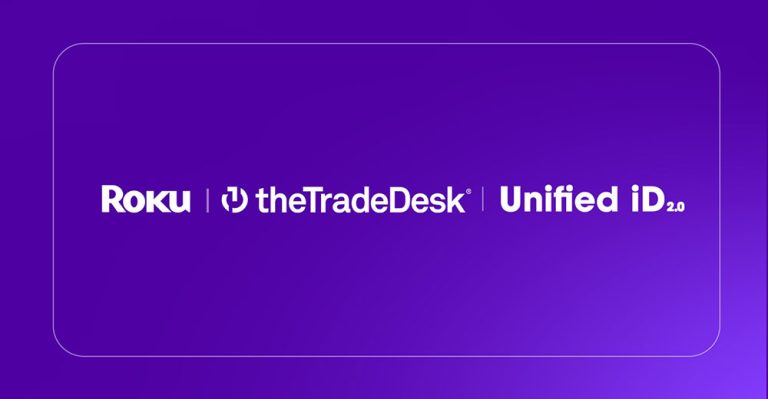Direct-to-consumer brands eager to find customers have an opportunity with Temu, China’s rapidly growing discount marketplace.
In February 2024, Temu launched a U.S. Seller Program, effectively opening the platform to American businesses. The program gives U.S. brands access to an estimated 185 million domestic and international shoppers each month — and growing.
In 2023, Temu became Apple’s most downloaded free application and dominated the iOS and Android app stores in 2024.

The Temu U.S. home page focuses on discount items.
Table of Contents
U.S. Seller Program
Temu, like its sister site, Pinduoduo, operates primarily on a consignment model.
Chinese and East Asian manufacturers fill Temu’s warehouse with goods and create product listings for the marketplace. When sold, the item is shipped directly from the Temu facility in a familiar, bright orange bag using clever air freight strategies to keep costs low.
The company recently began allowing American merchants to list products and optionally employ Temu’s warehouse and fulfillment system.
The program is free for small sellers, but a business requires a subscription ranging from 2% to 5% of the selling price. At the time of writing, the marketplace also charged a payment processing fee of 2.9% + $0.30 per transaction, and sellers paid all shipping costs. Collectively, the fees make Temu similar to other marketplaces.
DTC Opportunity
Temu’s low prices may not fit traditional retailers, but DTC brands could have an opportunity.
A DTC product is unique. Similar products may exist in Temu, but none are identical. Plus, American-made products might have a competitive advantage owing to perceived value and quality.
All told, I see five potential benefits for DTC brands selling on Temu.
Brand building
DTC brands on Temu can introduce shoppers to the company and build relationships.
The introduction happens when a Temu buyer finds the brand’s products. The relationship starts with order fulfillment. DTC sellers could include in the packaging a physical product catalog, a coupon for a free item, or a note describing the brand’s story.
Items requiring a warranty registration offer the opportunity to collect the buyer’s email address and phone.
Revenue
Any established sales channel is a revenue opportunity. Temu has a massive user base, and those shoppers, discount-oriented as they may be, are the opportunity.
Temu’s media agency told me the company does not share estimated or average seller revenue. DTC shops should test, optimize, and iterate on the platform.
Marketing
DTC brands listing products on Temu can participate in platform-wide promotions and flash sales, driving traffic to listings and thus more interactions
Chinese expansion
DTC brands can flip the script and offer products to Chinese buyers via inventory stored in Hong Kong or other Temu locations.
Product development
The absence of a Temu listing fee facilitates the testing of new items. DTC brands can create short runs of prototype products, offer them on Temu, and learn what appeals to shoppers.
Marketplaces Generally
Selling on Temu should be part of a general marketplace strategy for DTC brands.
A brand selling on one marketplace can consider others. Hence listing on Amazon, Temu, Walmart, Esty, and eBay could all be part of an overall marketplace approach, such as:
- Set marketplace-specific objectives. Define revenue targets, customer acquisition rates, or brand awareness metrics for each marketplace.
- Establish marketplace audiences. Use analytics to learn customer demographics and purchasing behavior on a per-marketplace basis. A Temu shopper will likely differ from one on Amazon or Walmart.
- Align products with the marketplace. A brand might have several versions of similar items. Perhaps the top quality goods are on Amazon and entry-level items on Temu. Returns and seconds could sell on eBay.
- Optimize product listings. Common optimization tactics across all marketplaces include quality images, keyword-rich descriptions, and competitive prices. But keep in mind platform-specific practices, conventions, and rules.




